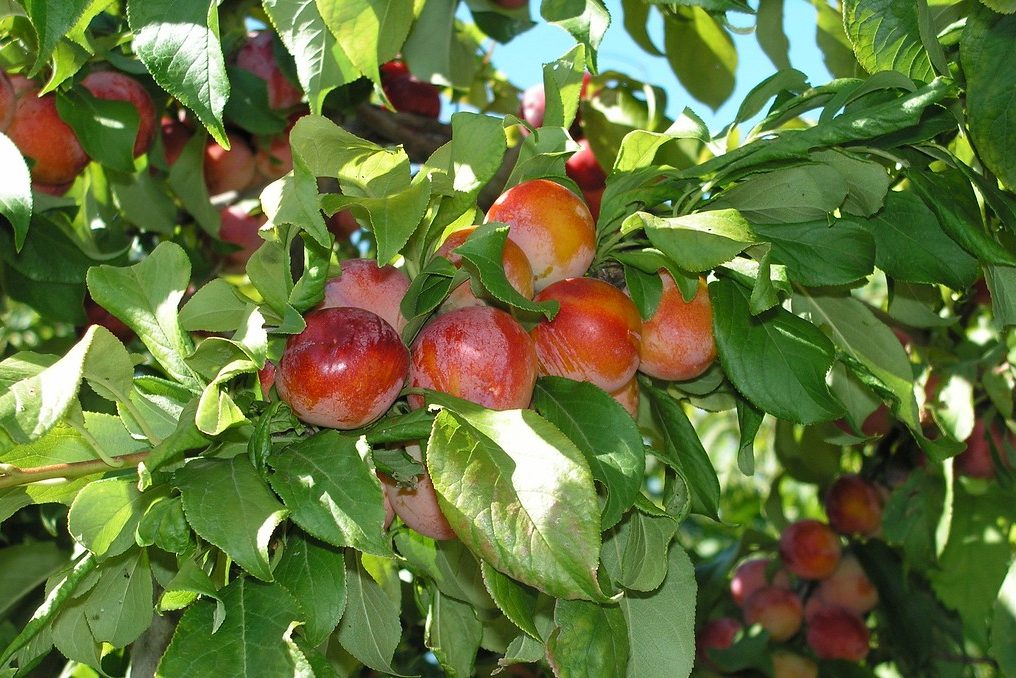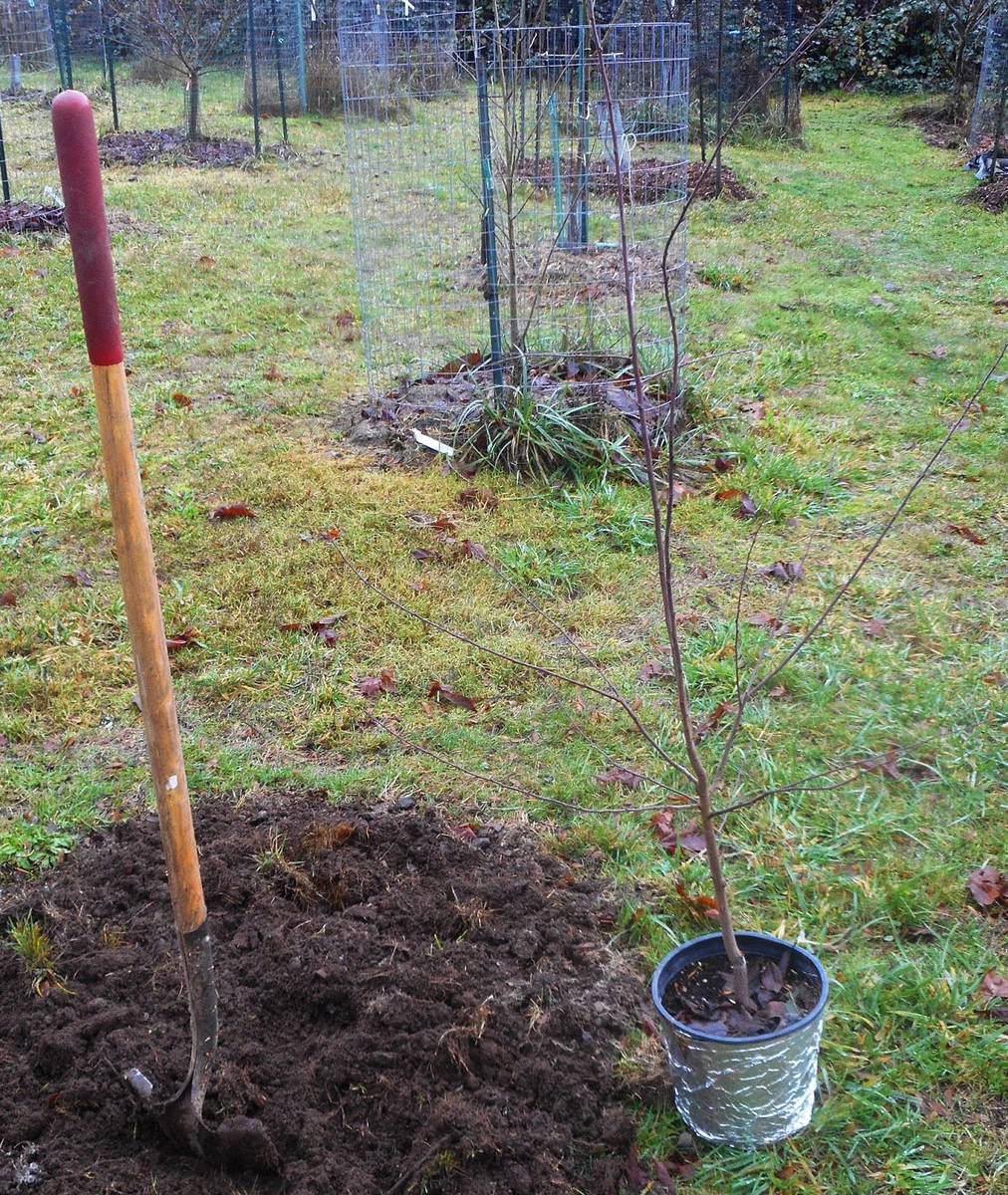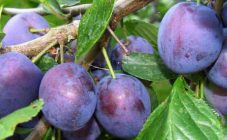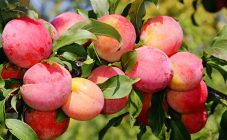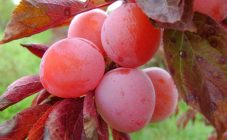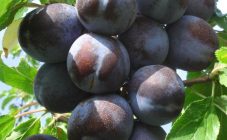By its origin, the plum Uvelskaya (other names - Ailinskaya, Kuyashskaya, etc.) originates from the Shershnevskaya variety, which is well-known among gardeners. It was bred as part of research work carried out by the Ural Research Institute of Agricultural Plants by a group of young breeders led by K.K. Mullayanov. In the State Register of the country, this hybrid was registered in 2004, where it was carried out in the Ural region (Siberia was not taken into account).
This crop represents self-fertile plum varieties for the Urals and is characterized by the following parameters:
- Low height.
- Medium-sized crown.
- Independence from external pollinators and increased sucrose content.
In addition, the best varieties of plums for the Urals are very sweet in taste, are resistant to most garden diseases and early fruiting.
Despite the fact that the pollination of this crop is based on self-fertility, in order to obtain a bountiful harvest, it is desirable to have an external pollinator, which is used as a variety of the Ussuri plum.
That is, according to the timing of the onset of the harvesting period, the Ailinskaya plum can be attributed to the category of late crops. The early maturity of this species is characterized by the number of fruit picks for the current season.
Description
To get acquainted with this hybrid, one of the varieties of which is the Kuyashskaya plum, you need to pay attention to its following features:
- The tree of this culture is of medium height, and the crown is quite spreading, characterized by a small density of foliage.
- The color of the tree bark is dark brown, the number of lentils in a young one-year shoot is average, while the branching is quite strong.
- The bud on the processes is also of medium size, leaves are rounded and deep green in color.
- The petiole of this plant is short, relatively thin, the petals are rounded, with a slight closeness.
- The pedicel is also rather short, formed mainly on shortened shoots.
The fruit of the Uvelskaya plum, which is described in this section, is of medium size (its weight does not exceed 23-24 grams). It is slightly rounded in shape and has no seam, its skin is smooth, with a reddish tint. The flesh is yellow, with a fibrous structure of medium density.
The stone in the fruits of this culture is round and very small (in comparison with the pulp, it occupies 1.3% of the volume). The color of the fresh plum is dark brown, the top is round. In terms of taste, it is characterized by increased sugar content with a rather weak acidity. The aroma of plum pulp is closer to normal in strength, and it received an excellent rating on the scale of taste (4.5 points).
The flowering time for this hybrid is average, in terms of ripening time it is classified as a late species of plum plants. Fruiting is assessed as very good, with instability noted throughout the entire harvest period.
Such characteristic as frost resistance of this fruit species is assessed as relatively low (1-2 points). But on the other hand, in terms of drought resistance, it slightly exceeds the average, and in terms of immunity to fungal infections, it can be classified as a very resistant species.
According to its ability for long-term storage and transportability, this garden plant is characterized positively, according to its application, the fruits of the Kuyashskaya plum, with the description of the variety of which we are reviewing, are assessed as universal. They make delicious canned durable products (compotes, jams and preserves).
Agrotechnics
Landing
For a more detailed acquaintance with the studied variety, which received the name Shershnevskaya plum from its ancestor, experts advise paying attention to the following features of its vegetation:
- To grow a full-fledged plum plant, seedlings are used, which are bought in specialized nurseries.
- The time of their planting, as a rule, is appointed in the springtime, which allows the young seedling to firmly root in the ground.
- The landing site is selected taking into account the good sunlight of a sufficiently sized plot located on a small elevation (not in a lowland).
- In addition, strong winds and high humidity should not be observed in this part of the garden.
- In the selected place, in the fall, a pit is pulled out, about 60 × 70 cm in size, into which organic fertilizers (humus, compost and wood ash) are introduced in advance.
When choosing and preparing a seedling for planting, the main attention should be paid to the safety of its root system. Immediately before planting a young tree, a wooden peg is driven into the central zone of the sump to support it in a fixed position. At the end of the excavation cycle, it will be necessary to water and loosen the soil around the seedling abundantly, and then mulch it.
Young sprout care
Caring for the Ural varieties of Shershnevskaya plum, described in the previous section, comes down to taking into account the following important points:
- The inadmissibility of such an unpleasant phenomenon as the heating of the root system, which occurs as a result of frequent thaws for the Ural region.
- Timely feeding and watering.
- Systematic pruning of seedlings.
- Preventive spraying and whitewashing.
Let's consider each of the listed procedures in more detail.
To protect against podperevaniya, some experts advise using forest moss, which is laid around a young tree in a continuous layer. One of the most important components of caring for this type of plum is the timely introduction of nutritional supplements, including mineral fertilizers and organic matter. After planting, they are used only for the 2-3rd year of the growing season, in volumes sufficient for the successful development of a young plant.
A significant role in caring for a growing tree belongs to its pruning, which in the initial period allows you to form the crown of a future tree, and subsequently is organized with the aim of rejuvenating it. At the same time, it is important to properly organize the watering of a young plant, carried out according to a previously thought out scheme. Its implementation involves strict control of the amount of moisture introduced. Exceeding the prescribed norm can provoke not only damping-off, but also the spread of fungal diseases.
Caring for the plum tree growing in the Ural region also includes protecting it from garden diseases and pests. One of the most common and effective methods of protection is disinfection (whitewashing) of the trunk of the growing seedling.
Advantages and disadvantages
In the list of advantages of the Ailinskaya plum plant, the description of the variety of which was presented earlier, you can add the following advantages:
- A high degree of frost resistance of its flowers and ovaries (this does not apply to branches and shoots).
- Increased immunity to the most dangerous garden diseases and good drought resistance.
- Perfect taste of fully ripe fruits.
- Permissibility of long-term storage and transportation.
To this list should be added the possibility of processing plum fruits in order to obtain sweet preserves and jams. One of the completely removable disadvantages of this variety is the instability of yield indicators in different years.
In the final part of the review, we note that when growing the Uvelskaya plum in the Ural region, many of its subspecies are used, which differ from the main one only in small details.
